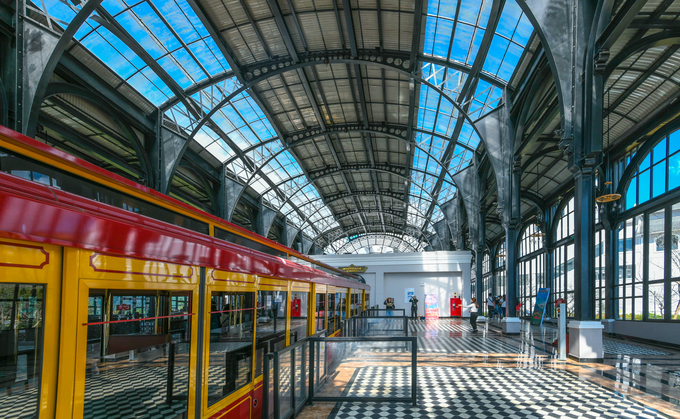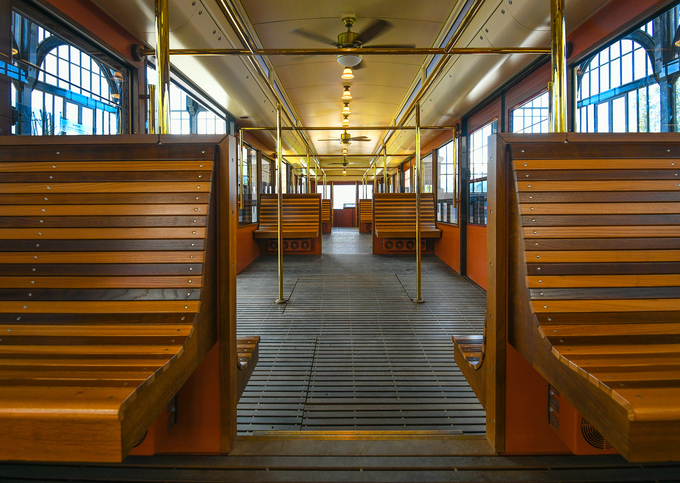By Lawrence Haywood, Mar 15, 2025
For many tourists visiting Sapa in Vietnam’s northern stretches, a trip to Fansipan Mountain is one of the town’s unmissable experiences. The mountain is the tallest in Vietnam, Laos and Cambodia and has earned the nickname of ‘the Roof of Indochina’ because of its lofty 3,143m peak, attracting tens of thousands of tourists a year via its cable car, the Sun World Fansipan Legend, as well as its trekking route, which attracts a few thousand more. Accompany us in this Sapa travel guide to find more detailed information about Sapa Mountain Climbing Train!
Despite the ease at which the cable car can transport tourists to the peak, since its construction in 2016, tourists have still been left with a bit of a headache as to how to get to Sapa cable car station from the town. Until recently, a 20-minute drive across rocky and winding roads atop the Muong Hoa Valley was the only way to the station, but early 2018 saw the development of the Sapa Mountain Climbing Train, operated by Sun World, the same company that operates its highly lucrative cable car. The train connects Sapa town to the cable car station in about four minutes, saving tourists a wealth of time and money as Sapa ramps up its tourism drive even further.

Sapa Climbing Mountain Train Station
The journey to the top of Fansipan begins in the town, from the Hotel de la Coupole – McGallery by Sofitel, set to be finished in December 2018. Just beside the 5-star mega hotel, the beautiful Sun Plaza Sapa Station stands in a vivid French colonial style, along with many other of buildings around this former French hill town. The station is located in the centre of the town, about 600m away from Sapa Lake, requiring about an 8-10 minute walk or a taxi taking just 3 minutes. Sun World’s idea with the train was to make it available for everyone and to that end, the route to the station is mostly flat and its access shouldn’t pose a problem, even for the elderly.
Between the Sun Plaza Sapa Station and the Cable Car Station Sapa (bear with us here, the names can get a little confusing), the Sapa Mountain Climbing Train takes four minutes to complete its journey and covers 2km of track high above the Muong Hoa Valley. This is about 16 minutes faster than the previous fastest method of transport, the taxi, given that the road from Sapa to the cable car station is steep and winds around many mountainsides on its ascent. Trains run from 6:30 am to 6:30 pm daily and are capable of carrying 200 passengers, departing about every six minutes.

Inside the Sapa Train
There are 2 stops Muong Hoa funicular and Fansipan funicular (Do Quyen Mountain Train) with 4 kinds of ticket prices (UPDATED 2024):
- Muong Hoa Funicular (Return): 150,000 VND ($5.89)
- Fansipan Funicular (Way-up): 150,000 VND ($5.89)
- Fansipan Funicular (Way-down): 120,000 VND ($4.71)
- Fansipan Funicular (Return): 270,000 VND ($10.61)
* The opportunity to "ship-the-line": 200,000 VND ($7.86)
Tickets can be bought at the Sun Plaza Sapa Station directly before boarding the train.
There are many benefits of heading to the Sapa cable car station with the Sapa mountain climbing train over the previous, road-based method.
• To Save Time and Money – These are the two biggest factors in Sun World’s drive to persuade tourists to use their cable car. Taxis across the winding road can take over 20 minutes and cost considerably more than the 200,000 VND for the train.
• For a Fixed Price – Sapa is one of Vietnam’s top travel destinations and, as such, taxi drivers will try to get as much as possible from wide-eyed tourists walking around the town. Not only can bargaining increase the length of time of your journey, but the taxi drivers of Sapa are professionals at getting the best deal for themselves, usually meaning that you’ll end up bargaining for a higher price than you should be paying anyway.
• For the Wes Anderson-style Architecture – Fans of the iconic film director Wes Anderson will likely be fans of Bill Bensley, the renowned American architect behind both the Hotel de la Coupole and the Sun Plaza Sapa Station, designed in beautiful French colonial style. For more classical European style, the Sapa funicular train to the cable car station is full of deep colours, ceiling fans and perfect symmetry; designed by the Swiss company Garaventa but easily taken as a set of a Wes Anderson movie.
• To Avoid Travel Sickness – The winding road from Sapa to the foothills of Fansipan and the pace at which Vietnamese taxi drivers can go can sometimes amount to bouts of travel sickness for sensitive travellers. By comparison, the Sapa mountain climbing train takes a much more placid route, running fairly straight and with only mild, and very slow, ascension.
• For the Views – Unsurprisingly for Sapa, the views available from the Sapa funicular railway are astounding, making the transport an attraction in its own right. For most of the journey, the Muong Hoa Valley rolls out below, with all of the forested mountains, tiered rice paddies and blue sky buffered by a thick white cloud that Sapa is known for. The train even stops for a minute at its most scenic point, giving tourists a chance to get pictures before moving on through tunnels and viaducts on its way to the cable car station.
For a host of professionally led Sapa tours from Incredible Asia Journeys, please click here. All of these tours feature guided treks of the Sapa region, but also much free time in its main town. Reaching Fansipan Peak is entirely possible within half a day from Sapa’s centre and there are many other attractions around the town to occupy your time here.